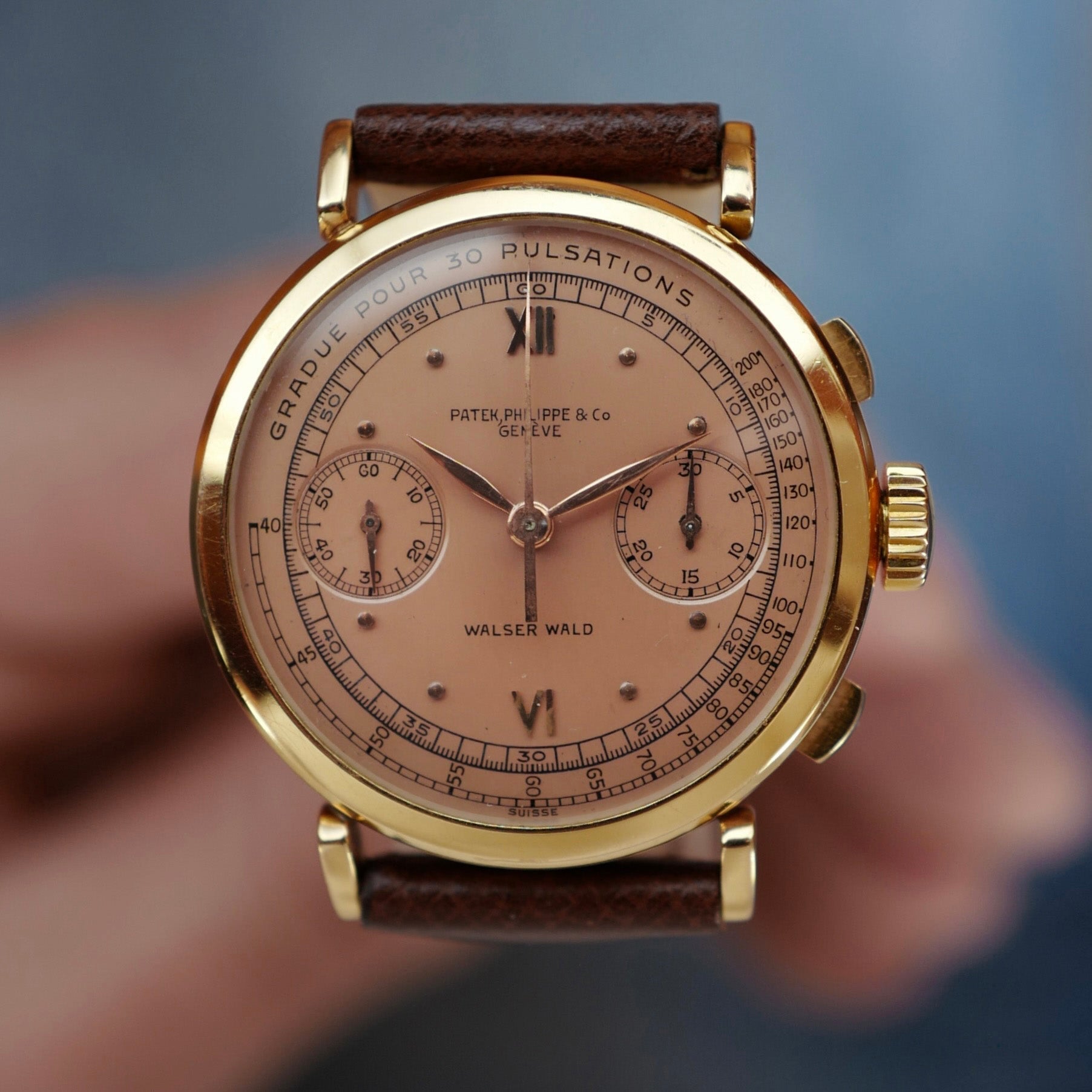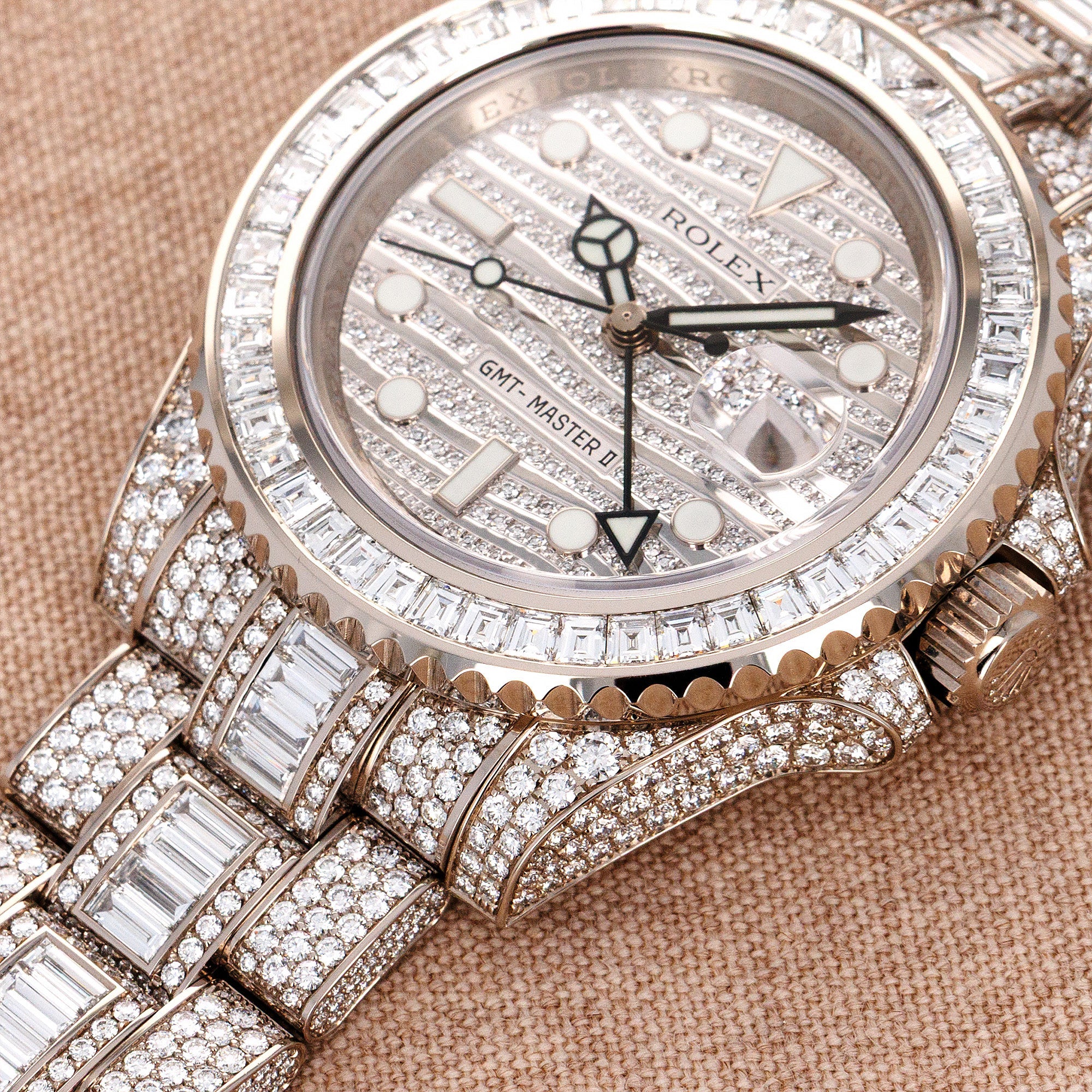The Patek Philippe Reference 591: A Timeless Chronicle of Craftsmanship
In the pantheon of luxury watchmaking, Patek Philippe reigns supreme, crafting timepieces that are as much works of art as they are instruments of time. Among its illustrious creations, the Reference 591 stands as a rare and captivating chronograph, a testament to the brand’s mastery during a pivotal era. Produced between 1938 and 1947, this watch encapsulates the elegance and innovation of mid-20th-century horology, earning a revered place in the hearts of collectors. With its distinctive design, limited production, and historical significance, the 591 is not just a watch—it’s a piece of history.

Historical Context: A World in Transition
The late 1930s and 1940s were a tumultuous period, marked by global conflict and economic challenges. Yet, in Geneva, Patek Philippe continued to push the boundaries of watchmaking. The demand for chronograph wristwatches was rising, driven by their practical applications in science, sports, and medicine. Patek Philippe responded with models like the Reference 130, their first serially produced chronograph, launched in 1934. The Reference 591 followed, introduced in 1938, offering a fresh design perspective while leveraging the same reliable movement. This era saw Patek Philippe balancing tradition with innovation, creating timepieces that were both functional and aesthetically refined.

Design and Features: The "Fagiolino" Aesthetic
The Reference 591 is instantly recognizable for its unique design, particularly its "bean-shaped" lugs, which have earned it the affectionate nickname "Fagiolino," meaning "small bean" in Italian. These lugs, paired with similarly shaped chronograph pushers, create a harmonious and elegant silhouette that distinguishes the 591 from its contemporaries. The case, measuring 34 mm in diameter, was typical for the period and crafted in either 18K yellow gold or pink gold, materials that exuded luxury and sophistication.
The watch’s dial variations add to its allure. Most examples feature silvered dials with tachymeter scales, ideal for measuring speed over a fixed distance—a nod to the chronograph’s practical roots. However, rare variants elevate the 591 to legendary status. One such example is a 1939 pink gold model with a matching pink dial and a pulsation scale, designed for medical professionals to measure heart rates. This particular watch, signed by Walser Wald, a prominent retailer in Buenos Aires, is one of only two known with this configuration, making it a holy grail for collectors.
At the core of the 591 lies the caliber 13-130, a manual-winding chronograph movement based on the Valjoux 23 ébauche. Patek Philippe transformed this base movement through extensive modifications and meticulous finishing, incorporating 23 jewels, a straight-line lever escapement, and a self-compensating Breguet balance spring. Stamped with the Geneva Seal, the movement is a masterpiece of classical design, celebrated for its reliability and aesthetic beauty.
Technical Specifications
|
Feature |
Details |
|---|---|
|
Reference Number |
591 |
|
Production Period |
1938–1947 |
|
Case Material |
18K yellow gold or pink gold |
|
Case Diameter |
34 mm |
|
Movement |
Manual-winding, caliber 13-130, 23 jewels, based on Valjoux 23 ébauche |
|
Dial Variations |
Silvered with tachymeter scale; rare pink with pulsation scale |
|
Lugs |
"Bean-shaped" (Fagiolino), matching chronograph pushers |
| Strap |
Leather with 18K gold Patek Philippe buckle |
|
Functions |
Hours, minutes, chronograph with two subsidiary dials |
Production and Rarity: A Limited Legacy
The Reference 591 is among the rarest chronographs produced by Patek Philippe during the 1930s and 1940s. Estimates suggest that only approximately 100 pieces were crafted over its nine-year production run. Of these, around 40 are believed to be in yellow gold and 60 in pink gold, though some sources cite slightly different figures, such as 54 in pink gold. The discrepancy reflects the challenges of documenting vintage production, but all agree on the 591’s scarcity. Research indicates that fewer than 17 yellow gold examples and about 27 pink gold examples have surfaced in the market, underscoring their elusive nature.
This limited production enhances the 591’s appeal among collectors. Unlike the more widely recognized Reference 130, which shares the same caliber 13-130 movement but features a traditional round case with straight lugs, the 591’s unique design sets it apart. Its rarity and distinctive aesthetic make each appearance at auction a significant event, drawing attention from enthusiasts worldwide.

Notable Examples and Auction Results
The Reference 591’s value is reflected in its auction performance, where pristine examples command substantial sums. A standout is the 1939 pink gold 591 with a pink dial and 30-pulsation scale, signed by Walser Wald. This watch, one of only two known with this dial configuration, sold at Phillips Auctions in November 2017 for CHF 100,000 and again in December 2021 for $201,600. It is currently listed by TropicalWatch.com for $246,850, highlighting its enduring demand.
Another notable example is a 1940 yellow gold 591 with a silvered dial and tachymeter scale, sold with a Patek Philippe Extract from the Archives confirming its sale on November 4, 1940. A similar yellow gold model fetched CHF 149,250 at auction in 2004, demonstrating the 591’s consistent value over time. These results underscore the watch’s status as a collector’s treasure, with its rarity and condition driving prices ever higher.
Comparison to Contemporaries
The Reference 591 shares its movement with the Reference 130, Patek Philippe’s first serially produced chronograph, launched in 1934. While the 130 is celebrated for its classic design and broader production (approximately 1,500 pieces), the 591’s "Fagiolino" lugs and limited numbers give it a distinct identity. The 130’s straightforward case design contrasts with the 591’s more artistic approach, making the latter a bolder statement of style. Both watches represent Patek Philippe’s early mastery of chronograph complications, but the 591’s rarity and unique aesthetics elevate it to a niche coveted by discerning collectors.
Collectibility and Modern Relevance
Today, the Reference 591 is a cornerstone of vintage Patek Philippe collections, prized for its scarcity and historical significance. Its value has soared in recent decades, driven by growing interest in vintage chronographs and Patek Philippe’s enduring prestige. The watch’s compact size, once standard, now appeals to collectors seeking understated elegance in contrast to modern oversized timepieces.
The 591’s rarity ensures it remains a rare sight, even at major auctions. Collectors must act swiftly when one appears, as opportunities to acquire a well-preserved example are fleeting. Its blend of technical prowess and aesthetic innovation makes it a timeless piece, embodying Patek Philippe’s philosophy of creating watches that transcend generations.
The Patek Philippe Reference 591 is more than a timepiece; it is a horological artifact that captures the essence of a bygone era. Its "Fagiolino" lugs, masterful caliber 13-130 movement, and limited production make it a standout in Patek Philippe’s storied history. For collectors, owning a 591 is akin to possessing a piece of art—a rare privilege that connects them to the craftsmanship and elegance of mid-20th-century watchmaking. As auction results and market demand demonstrate, the 591’s allure only grows with time, cementing its status as a true icon of horology.


